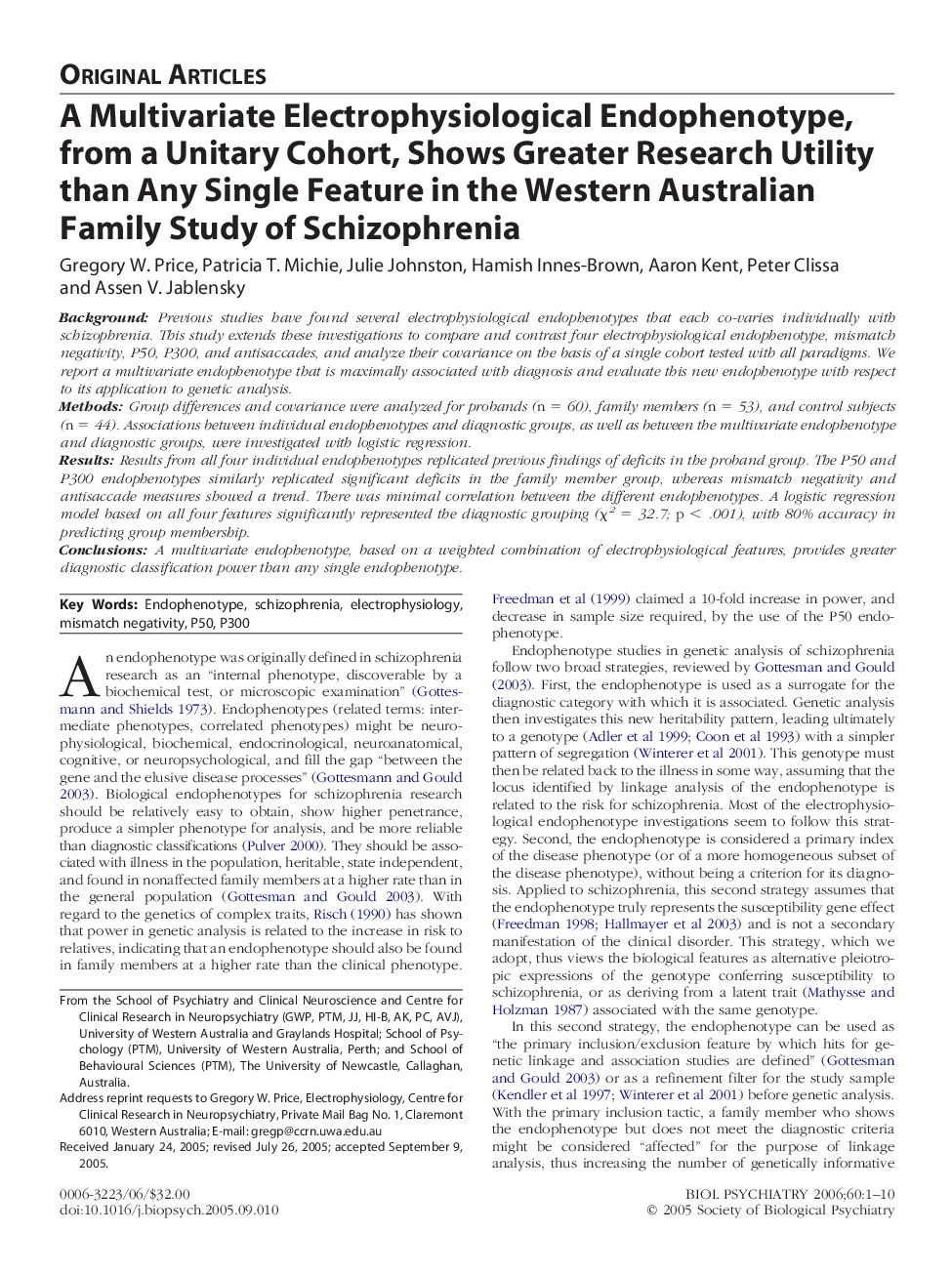| Article ID | Journal | Published Year | Pages | File Type |
|---|---|---|---|---|
| 4180730 | Biological Psychiatry | 2006 | 10 Pages |
BackgroundPrevious studies have found several electrophysiological endophenotypes that each co-varies individually with schizophrenia. This study extends these investigations to compare and contrast four electrophysiological endophenotype, mismatch negativity, P50, P300, and antisaccades, and analyze their covariance on the basis of a single cohort tested with all paradigms. We report a multivariate endophenotype that is maximally associated with diagnosis and evaluate this new endophenotype with respect to its application to genetic analysis.MethodsGroup differences and covariance were analyzed for probands (n = 60), family members (n = 53), and control subjects (n = 44). Associations between individual endophenotypes and diagnostic groups, as well as between the multivariate endophenotype and diagnostic groups, were investigated with logistic regression.ResultsResults from all four individual endophenotypes replicated previous findings of deficits in the proband group. The P50 and P300 endophenotypes similarly replicated significant deficits in the family member group, whereas mismatch negativity and antisaccade measures showed a trend. There was minimal correlation between the different endophenotypes. A logistic regression model based on all four features significantly represented the diagnostic grouping (χ2 = 32.7; p < .001), with 80% accuracy in predicting group membership.ConclusionsA multivariate endophenotype, based on a weighted combination of electrophysiological features, provides greater diagnostic classification power than any single endophenotype.
